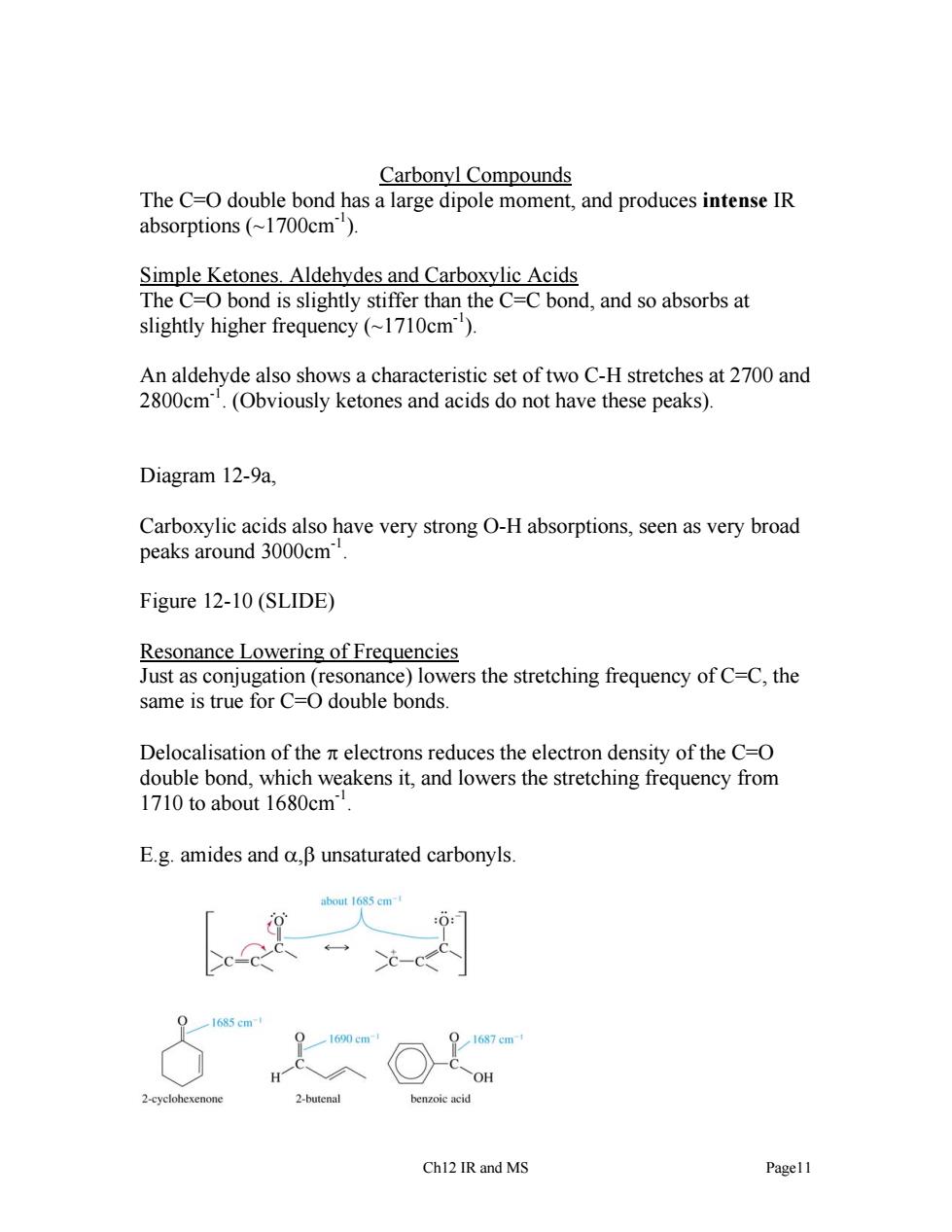正在加载图片...

CarbonvI Compounds The C=O double bond has a large dipole moment,and produces intense IR absorptions(~1700cm). Simple Ketones.Aldehydes and Carboxylic Acids The C=O bond is slightly stiffer than the C=C bond,and so absorbs at slightly higher frequency (-1710cm). An aldehyde also shows a characteristic set of two C-H stretches at 2700 and 2800cm (Obviously ketones and acids do not have these peaks). Diagram 12-9a, Carboxylic acids also have very strong O-H absorptions,seen as very broad peaks around 3000cm Figure 12-10(SLIDE) Resonance Lowering of Frequencies Just as conjugation(resonance)lowers the stretching frequency of C=C,the same is true for C=O double bonds. Delocalisation of the n electrons reduces the electron density of the C=O double bond,which weakens it,and lowers the stretching frequency from 1710 to about 1680cm E.g.amides and a,B unsaturated carbonyls 5⊙知 Chl2 IR and MSCarbonyl Compounds The C=O double bond has a large dipole moment, and produces intense IR absorptions (~1700cm-1). Simple Ketones. Aldehydes and Carboxylic Acids The C=O bond is slightly stiffer than the C=C bond, and so absorbs at slightly higher frequency (~1710cm-1). An aldehyde also shows a characteristic set of two C-H stretches at 2700 and 2800cm-1. (Obviously ketones and acids do not have these peaks). Diagram 12-9a, Carboxylic acids also have very strong O-H absorptions, seen as very broad peaks around 3000cm-1. Figure 12-10 (SLIDE) Resonance Lowering of Frequencies Just as conjugation (resonance) lowers the stretching frequency of C=C, the same is true for C=O double bonds. Delocalisation of the π electrons reduces the electron density of the C=O double bond, which weakens it, and lowers the stretching frequency from 1710 to about 1680cm-1. E.g. amides and α,β unsaturated carbonyls. Ch12 IR and MS Page11